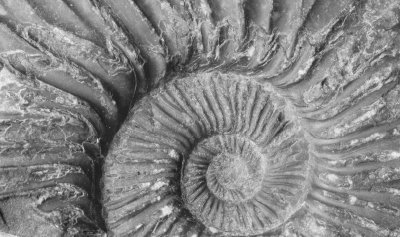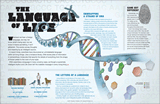DNA Decay Rate Evaluated
DNA decay rate evaluated.
News Source
- Nature: “DNA Has a 521-year Half-life”
How long recognizable biomolecules can persist after death is relevant in fields ranging from forensics to paleontology. While a number of fossils believed by evolutionists to be millions of years old have yielded proteins such as collagen and keratin, DNA has been more elusive. DNA-bearing soft tissue found in fossils has generally been considered a contaminant, leaving the acquisition of DNA from the “deep time” of dinosaurs in the realm of science fiction such as Jurassic Park.
Harvard physicist Michio Kaku recently expressed hopes that evolutionary extrapolation might provide an alternative non-DNA requiring route to produce a DNA dino-likeness. He was thus acknowledging the unlikelihood of recovering DNA from ancient dinosaurs.1 But how long could sequenceable DNA last?
After death, the absence of cellular DNA-repair mechanisms allows unchecked cleavage of chemical bonds. Bacteria also destroy DNA. However, water is thought to be the greatest factor promoting DNA strand cleavage. Therefore, paleogeneticists led by Morten Allentoft and Michael Bunce set out to see whether DNA decays at a predictable rate. DNA decay does follow an exponential decay pattern in human tissues within twenty days after death, but does that pattern continue over decades, millennia, and millions of years?
Temperature, the chemical conditions during fossilization and preservation, the presence of bacteria, and even duration of storage after excavation are all factors that could complicate this question. The researchers examined the DNA in 158 leg bones from moa, extinct giant birds. The bones were excavated over the past 70 years from three sites in New Zealand. The sites are close to each other, and the fossils are all believed to have been preserved under nearly identical conditions at a temperature of 13.1 ºC (55.6 ºF). Radiocarbon dates for the bones suggest ages ranging from about 600 to 8,000 years.’2
By measuring the length of remaining mitochondrial DNA fragments, the team calculated the half-life of meaningfully sequenceable DNA.
By measuring the length of remaining mitochondrial DNA fragments, the team calculated the half-life of meaningfully sequenceable DNA. DNA half-life for a 242 base pair strand was 521 years, indicating a decay rate about 400 times slower than predicted. The researchers suspect that nuclear DNA decays considerably faster. They also reported that despite the rough correlation to radiocarbon-determined ages, there was a great deal of variation, possibly due to varying conditions during the process of fossilization. Nevertheless, extrapolating their calculations to other possible scenarios, they suggest that soft tissue preserved at –5 ºC might harbor DNA fragments about 30 base pairs long for considerable lengths of time, possibly allowing preservation of a meaningful amount of DNA in million-year old specimens, but not 65–million-year-old ones.’3
DNA certainly can last as long as Neanderthals and Denisovans, for their DNA has been recovered and sequenced. Evolutionists are convinced that dinosaurs became extinct 65 million years ago and therefore never lived at the same time as humans. However, the Neanderthal and Denisovan teeth and bone that have yielded DNA for analysis represent Ice Age people preserved since the time of the global Flood. The dinosaur fossils we have typically were buried during the global Flood and thus were preserved under different conditions that those of the ancient humans. The conditions of preservation, as the authors note, can greatly affect the rate of degradation. Thus, even though biblical history tells us that animals (which include dinosaurs) and humans were created about 6,000 years ago, we would not be able to reasonably predict preservation of dino-DNA.
The calculation of a “half-life” for DNA, while a useful figure to keep in mind, is dependent on the assumptions affecting interpretation of radiocarbon dates. Extrapolation of that number backwards in time rests on the uncertain knowledge of the conditions of preservation as well as the assumptions affecting the radiometric dates by which future specimens are calculated. Thus, age estimates based on the degree of DNA preservation, sure to come in the future, will need to be taken with a grain of salt.
Further Reading
- Two: Those Not-So-Dry Bones
- Collagen Coils (collagen coils)
- Persistent Protein (persistent protein)
- Jurassic Squid’s Ink(Jurassic ink)
- Carbon-14 Dating
- Carbon-14 in Fossils and Diamonds
- A Creationist Puzzle
For More Information: Get Answers
Remember, if you see a news story that might merit some attention, let us know about it! (Note: if the story originates from the Associated Press, FOX News, MSNBC, the New York Times, or another major national media outlet, we will most likely have already heard about it.) And thanks to all of our readers who have submitted great news tips to us. If you didn’t catch all the latest News to Know, why not take a look to see what you’ve missed?
(Please note that links will take you directly to the source. Answers in Genesis is not responsible for content on the websites to which we refer. For more information, please see our Privacy Policy.)
Footnotes
- News to Note, October 6, 2012
- “The calibrated radiocarbon ages of the 158 fossils documented a Mid- to Late Holocene accumulation, ranging from 602 to 7839 BP, calibrated calendar years before present (‘present’ defined as CE 1950).” M. E. Allentoft et al., “The half-life of DNA in bone: measuring decay kinetics in 158 dated fossils,” Proc. R. Soc. B Published online before print October 10, 2012, doi: dx.doi.org/10.1098/rspb.2012.1745. For more about radiocarbon dating, see “Carbon-14 Dating,” “Carbon-14 in Fossils and Diamonds,” and “A Creationist Puzzle.”
- This is based on a calculated half-life of 158,000 years for 30 base pair fragments. They also determined that the duration of storage since excavation probably doesn’t affect DNA degradation very much. M. E. Allentoft et al., “The half-life of DNA in bone: measuring decay kinetics in 158 dated fossils,” Proc. R. Soc. B Published online before print October 10, 2012, doi: dx.doi.org/10.1098/rspb.2012.1745.
Recommended Resources

Answers in Genesis is an apologetics ministry, dedicated to helping Christians defend their faith and proclaim the good news of Jesus Christ.
- Customer Service 800.778.3390
- © 2024 Answers in Genesis








